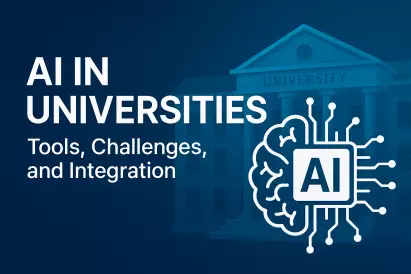Summary: Explore the evolving landscape of master’s degrees in Australia for 2025, including rising demand for STEM and interdisciplinary fields, flexible online delivery models, and global appeal. Understand how international students benefit from scholarships, innovative learning, and career-oriented structures. This article highlights key trends, student expectations, affordability issues, and exciting future opportunities for both learners and employers.
Overview of Australia’s Master’s Degree Trends in 2025
Master’s degrees in Australia in 2025 play a critical role in enhancing professional capabilities within a rapidly evolving educational and job market.
This shift is largely influenced by technological advancements, workforce transformations, and increasing globalization. As Australia addresses skill shortages and ongoing economic changes, master’s programs aim to develop industry-aligned competencies among both local and global students.
Areas such as Big Data Management and Data Analytics in Oceania are prominent examples of how curriculum is being aligned to future technological needs.
Emerging Fields and Shifts in Study Preferences
A strong tilt toward STEM disciplines is evident, with a notable surge in demand for programs related to information systems, public policy, data science, and environmental science.
Australia's strategic focus on sustainability and a tech-driven future reinforces these academic preferences.
Business degrees retain popularity, yet are increasingly coupled with digital literacy and analytics components to meet evolving job roles.
This trend is reflected in interdisciplinary interest areas like Corporate Communication in Oceania and Environmental Management, blending business with new-age responsibilities.
Flexible and Interdisciplinary Learning Models
Australian universities are innovating with interdisciplinary programs that merge technology, environmental science, business, and public policy.
Modular programming allows for personalized learning paths tailored to emerging career fields and individual aspirations.
These formats support both depth in specialization and the development of wide-ranging, transferable skills essential for today's dynamic workplaces.
Fields such as Innovation and Project Management and Design Thinking embody these cross-functional learning experiences.
Digital Transformation of Program Delivery
2025 sees a continuation of online and hybrid delivery methods, a shift accelerated by the global pandemic. These formats offer flexibility to working professionals and enhance global access to top-tier Australian master’s programs.
Virtual learning platforms are now sophisticated, supporting collaborative digital learning environments and maintaining the integrity of assessments.
Programs in E-Business and Digital Marketing and Cybersecurity are particularly well-suited to online delivery, aligning with the needs of a digitally savvy audience.
Australia’s Global Education Appeal
Australia’s master’s degrees continue to attract international candidates owing to their alignment with global frameworks such as the Bologna Process, offering qualifications recognized worldwide.
Universities emphasize multicultural classrooms, research collaboration, and practical skill-building, making graduates highly employable across borders.
Global relevance is evident in disciplines such as International Management in Oceania and International Business Law.
Tuition, Scholarships, and Funding Trends
Annual tuition costs for international students typically fall between AUD 30,000 and AUD 80,000. However, an extensive framework of scholarships is aimed at improving access to higher education, particularly for high-performing global candidates.
Research-led programs often offer comprehensive funding packages including living stipends and health insurance.
Scholarships are especially relevant in research-intensive programs such as Economics and Public Health.
Shifts in Student Demographics and Expectations
The student body in Australia’s master’s programs is becoming increasingly diverse, comprising mature professionals, career changers, and international students from across the globe.
There is heightened demand for flexible study schedules, hands-on learning, and career-oriented outcomes including internships and real-world projects.
Programs that integrate leadership and versatility such as those in Leadership and Entrepreneurship are particularly appealing to this evolving demographic.
Challenges in the Master’s Landscape
While the sector exhibits robust growth, persistent concerns remain regarding tuition affordability, especially for underrepresented groups.
Additionally, universities must constantly refresh curricula to keep pace with fast-changing technological landscapes. The quality assurance of digital programs continues to demand attention to ensure academic standards and employer trust.
Accreditation bodies are also tasked with maintaining rigorous oversight amid a rapidly diversifying higher education architecture, particularly in disciplines like Human Resources Management.
Innovations and Strategic Opportunities
Master’s education in Australia is evolving through immersive learning tools such as simulations, project-based work, and digital badges.
Collaborations between academia and industry are enhancing practical readiness and supporting new models of credentialing like micro-credentials and stackable modules targeting continuous professional development.
Programs incorporating sustainability, ethics, and innovation—as seen in Corporate Social Responsibility and Innovation Awards—illustrate these forward-thinking developments.
Impact for Individuals, Business, and the Economy
The master’s education landscape in 2025 is a strategic value-add for students preparing for technology-driven, cross-disciplinary roles.
Employers benefit from competent graduates who balance analytical precision with soft skills. Nationally, master’s training fuels economic innovation and strengthens Australia's competitive global positioning.
Professionals equipped with expertise in areas like General Management and advanced Financial Market understanding are poised to lead Australia's next wave of economic growth.



